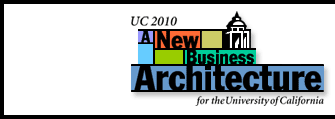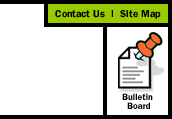





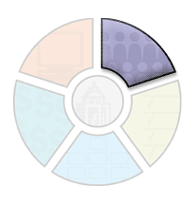
|
 |
 |
 |
 |
Approximately 100,000 people make up the University of California non-academic workforce — creating and maintaining the infrastructure to support UC faculty and students in renowned teaching, research, and public service.
The University is experiencing severe difficulties in recruitment and retention in many mission-critical occupations, including information technology professionals, development officers, technology-savvy administrative support staff, and nurses and other healthcare specialists. Nationally, unemployment is at a 29-year low and the Wall Street Journal has characterized the shortage of workers across America as "the tightest labor market in memory."
The University of California has multiple challenges in the immediate future. We need:
- Aggressive and innovative strategies to recruit and retain the best staff to support the UC mission;
- New problem-solving and teamwork skills in our workplace to support a larger, more complex organization;
- A human resources infrastructure designed to support the best workforce for our mission.
New Approaches to Recruitment and Retention
Develop UC as an Employer of Choice. We must effectively develop and promote
UC's inherent strategic advantages as a great place to work. There are many positive
things about working at the University of California, including:
- Work that is of vital importance to society
- Intellectual and cultural attractions associated with a vibrant academic community
- Career opportunities throughout the state
- Work/life balance generally superior to that found in private industry
- Excellent training (assuming recommended investments are made)
- Excellent technology tools (assuming recommended investments are made)
Develop user-friendly job application and recruitment processes. Electronic
recruitment, creative outreach and streamlining the hiring process will free Human
Resources staff to assist hiring authorities with job design, outreach, and selection.
These new approaches will also help UC compete for the best staff in a competitive
environment.
Expand Diversity Efforts. Outreach efforts to increase diversity and in-reach
strategies to retain diversity will need to be sustained and expanded so our workforce
represents the growing diversity of the State of California.
Explore Flexible Benefits. Benefits programs need to be enhanced to respond
to the needs of the current workforce. There are many options to create more flexible
retirement and health and welfare benefits. As an example, historically, the UC
Retirement Plan (UCRP) has been a tremendous recruitment and retention tool. However,
the current benefits design will not meet the portability demands of today's mobile
workforce. Under the UCRP defined benefit plan, if a UC employee leaves the University
of California prior to five years of employment or prior to becoming eligible
for retirement at age 50, there is no benefit available for the employee to take
to another employer prior to retirement age. The University must begin exploring
options that would address retirement benefit portability.
Rethink Job Design and Classification. Job design must be broader and more
centered on competencies and outcomes than on tasks. For example, future job classification
criteria cannot be based on size of staff supervised or size of budget that is
managed. Job classification systems must focus on the impact of each job on the
mission, and define jobs more broadly. This will also improve our capacity to
compare UC jobs to titles in other organizations and will facilitate market-based
pay practices.
Improve Market-Based Compensation. Implement the use of full compensation
methodology (salary, benefits, and incentives) to assess UC's compensation packages
against competitors, and improve our packages as needed to meet competition.
Improved Professional Development and Productivity Strategies
In order to sustain and grow our organization and our workforce, UC will need to invest deeply in a different kind of employee training and development for both academic and non-academic personnel throughout the University. We need to provide our employees with just-in-time training embedded in the individual's business portal, as well as classroom training for development of such critical skills as team building and collaboration.
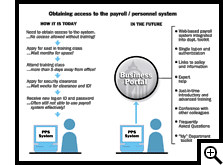 Customize Training Approaches. The University will need to develop several
approaches to meet organizational and employee needs for training and development.
Training needs will include interpersonal skill development, requiring face-to-face
training and workshops, as well as technical skills development, where systems,
tools and programs can be taught using online tools with just-in-time accessibility. Customize Training Approaches. The University will need to develop several
approaches to meet organizational and employee needs for training and development.
Training needs will include interpersonal skill development, requiring face-to-face
training and workshops, as well as technical skills development, where systems,
tools and programs can be taught using online tools with just-in-time accessibility.
Provide User-Friendly Online Training. For staff who support the business
and finance functions of the University, it will be critical to build functional
and technical knowledge as well as competency in using specific business applications.
Given the trend toward shorter tenure of staff in jobs, these staff will also
need to get up to speed quickly. The business portal approach to delivering information
and applications to the employee desktop will include both expert help and training
at various levels, from beginner to advanced. Staff will be able to learn how
to perform a function online, at their desktop, whether they are new to the University,
to the department, or they simply need a refresher on a task they perform infrequently.
This "just in time" approach to training, at the desktop, will require
that the University link training modules to accurate up-to-date policy guidelines
in order to provide a single source of "how to" information to the employee.
Develop Core Competencies. Across the organization we will need to assure
workforce acculturation (i.e. alignment with the purposes and culture of UC) as
well as baseline technical, interpersonal, and managerial competencies.
Create Career Mobility Opportunities. The University currently faces the
retirement of baby boomers from our workforce, many in leadership positions. At
the same time, we are experiencing significant growth. It will be important, therefore,
to build strategies for transferring institutional knowledge to build leadership
skills in our emerging workforce. Examples of such initiatives include internships,
fellowships, and career development programs. With a critical shortage of technology
professionals, we will need to strengthen opportunities for staff to move into
Information Technology roles.
Recognize the Need for Staff Resources. In the early 1990s, UC protected
its academic programs by reducing administrative staff support in academic departments
and central service organizations. As the university faces significant growth
in size and complexity, and expanding requirements by federal and state agencies,
it must recognize the need for an appropriate investment of staff resources to
support its academic mission. While we can continue to make great strides in productivity
through streamlining processes and providing new technology, UC must be ready
to deploy additional staff resources when necessary.
Strengthen Skills for Managing Complexity. The University of California
is as large as many Fortune 100 companies and is, by its nature, complex. As we
"scale up," we will be faced with the challenge of managing even greater
complexity. As the UC population grows, employee challenges go beyond increased
workloads (e.g. more payroll transactions, more course sessions), because the
University has learned that "economies of scale" can often be achieved
through streamlined systems. In the business environment of the future, UC staff
will need new skills for communicating across groups and organizations, both in
person and via technology channels. For example, they will need skills for managing
the plurality of interests such as negotiation, translation, empathy, and diplomacy.
To manage complexity, staff members will need not only new tools but greater knowledge
of management skills as well. They will also need skills in process simplification
and streamlining.
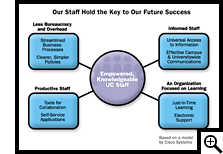 Treat Information and Knowledge as a Critical Asset. As we strengthen the
skills and commitments of our workforce and deepen the institutional, professional
and technical knowledge of staff and work groups, we need to retain this accumulated
knowledge as a critical asset of the University. Treat Information and Knowledge as a Critical Asset. As we strengthen the
skills and commitments of our workforce and deepen the institutional, professional
and technical knowledge of staff and work groups, we need to retain this accumulated
knowledge as a critical asset of the University.
Build and Sustain a Sense of Belonging and Purpose. The work of each member of the University community supports
the mission of the University — teaching, research, and public service. Knowing
how each of our roles supports the educational mission gives each staff member
a sense of purpose and connection to the whole. Since learning thrives in a strong
community, any plan for changing UC's business environment must consider sustaining
a strong sense of community as a critical factor in planning for the future. Efforts
to build and sustain a sense of belonging (community) and purpose (alignment with
our mission), as UC grows larger, needs to be woven into the fabric of all our
efforts — from new employee orientation through management development.
Strengthen and Integrate Overall Workforce Planning and Improve University/Union
Relations. The University has recently instituted several workforce planning
efforts. These efforts are intended to improve the quality of workforce data for
decision-making, to build deeper understanding and integration within and among
functional areas (such as systems, budget, human resources) and within and among
locations to solve common problems. Aggressive efforts must be made to improve
the relationships with the unions that represent the majority of the University's
workforce, and to deepen the dialogue on ways to prepare for institutional growth.
People Strategies:
Improve Recruitment and Retention
- Promote UC as an employer of choice
- Streamline the hiring process
- Expand outreach to increase diversity
- Create flexible benefits
- Improve job design and classification
- Institute market competitive compensation
Improved Professional Development and Productivity Strategies
- Customize training approaches, including an online training and development curriculum to complement and enhance current training offerings
- Expand training and development programs for core competencies in supervision/management, interpersonal skills, and basic technology
- Expand and build upon professional development offerings in leadership and other professional skills for career mobility (classes, internships, fellowships, other experiential learning)
- Create and build upon training programs and internships for employees to become information technology professionals (e.g. an in-house "IT University")
- Deploy additional staff resources when required by significant growth or new requirements
- Develop new on-site and off-site initiatives to deepen skills in managing complexity
- Strengthen orientation and acculturation initiatives to build community
- Improve workforce planning, including labor-management partnerships
|
 |
| |
|
 |
|
